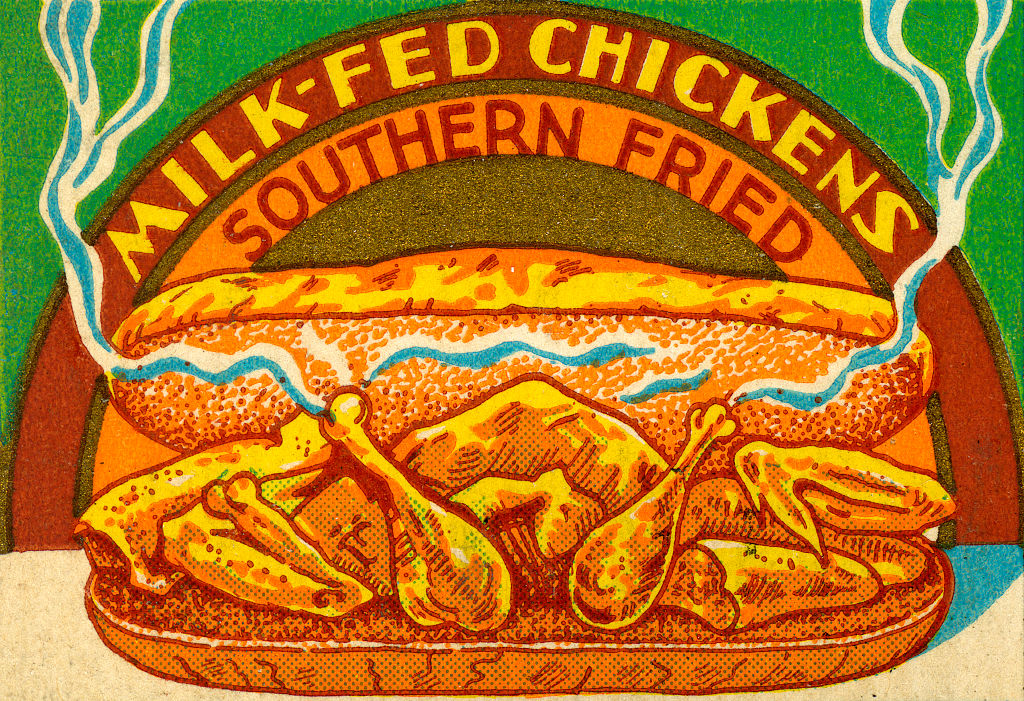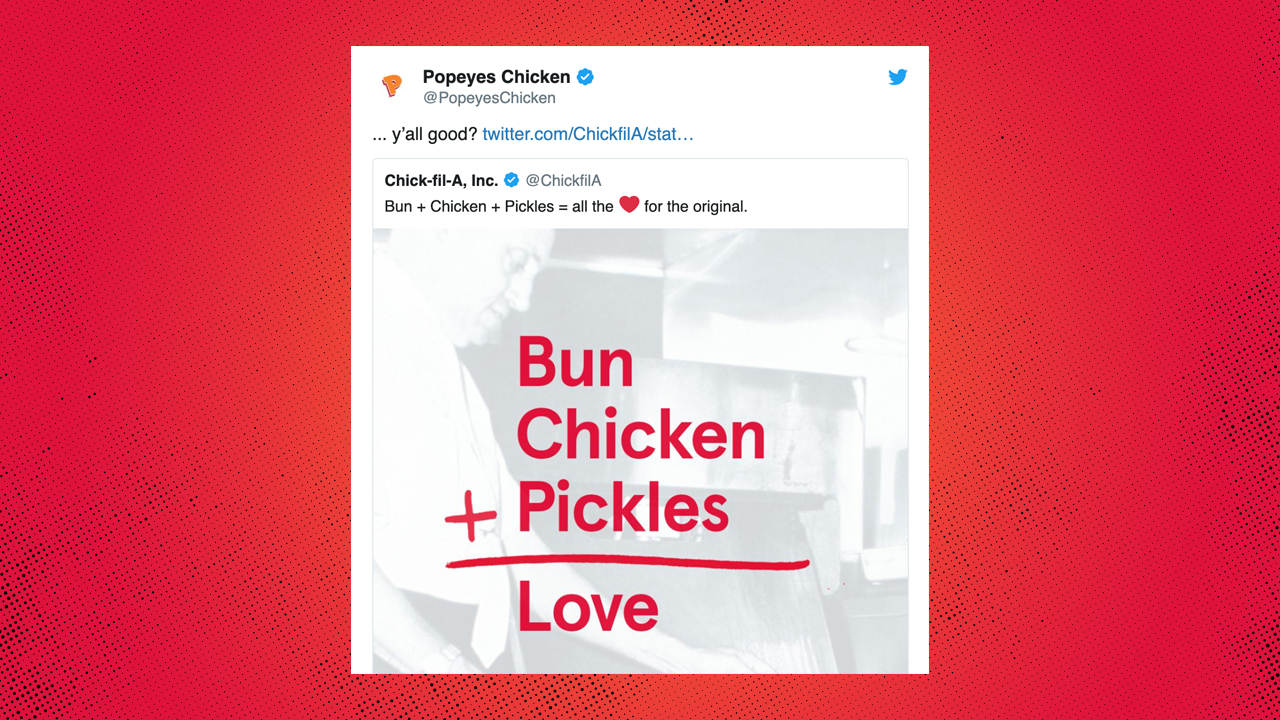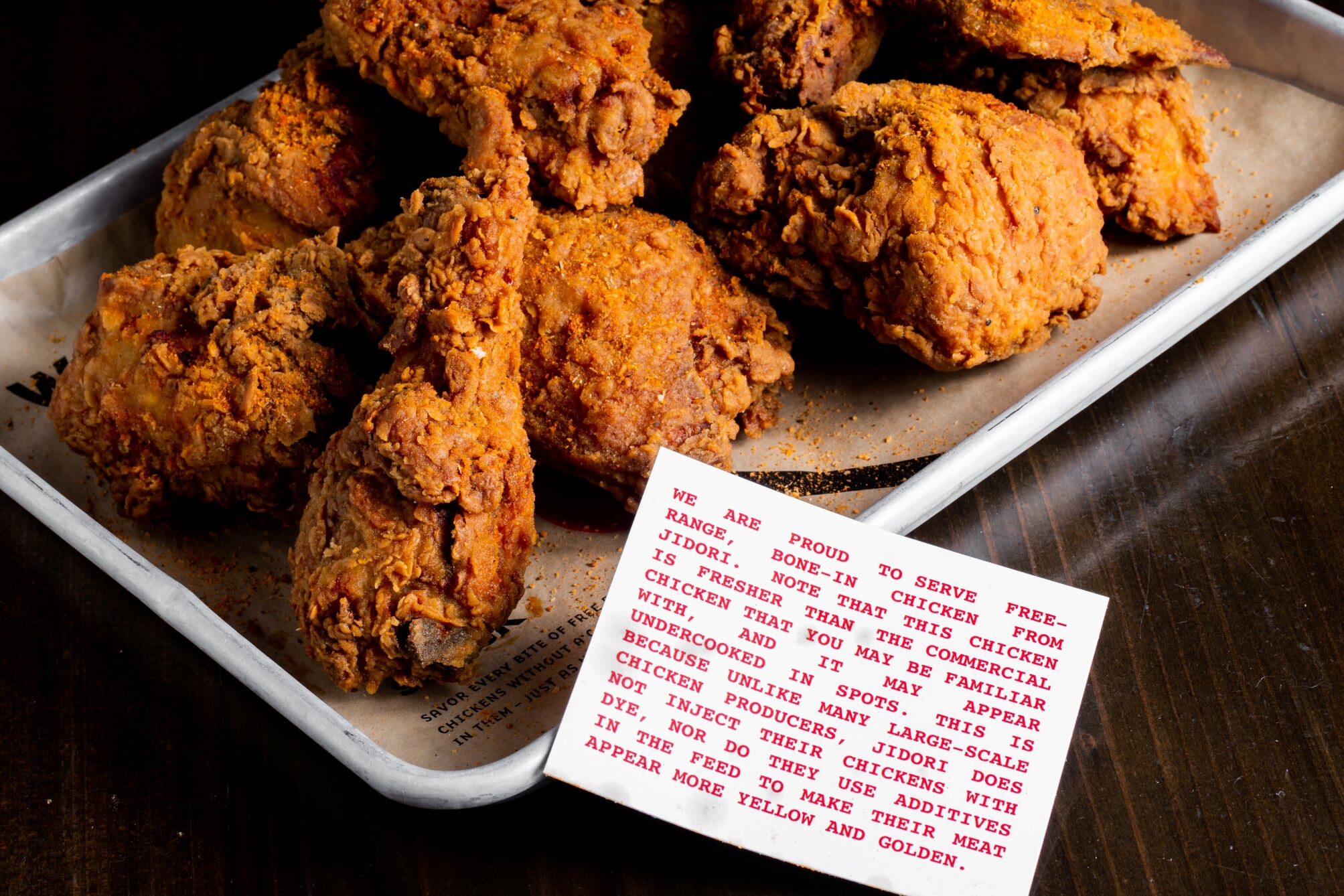“Solid, good cooking and comfort are always on-trend,” says Chef Richard Blais. We reached out to the Top Chef all-star and co-owner of The Crack Shack to talk chicken sandwiches because, well, that’s all people seem to be talking about lately. We figured, if anyone would understand how a sandwich basically turned into a cult obsession at the tail end of summer ’19, he might.
“Chicken is incredibly universal and always a crowd-pleaser,” Blais adds. “As is fried food, so… I think it’s just math.”
While he may be ignoring one massive reason for the phenomenon — Popeyes, the brand at the eye of this storm, has created a sandwich that is certainly very good, if not great — the chef is definitely onto something. It’s hard to deny the utility of a great fried chicken sandwich. The cushy bread, the tangy mayo, the crunch of a salty pickle, and, of course, a beautifully seasoned and deep-fried piece of chicken (hopefully brined thigh meat) is about as complex-yet-simple as a sandwich can be. Add a little heat and it’s bliss in a bun.
Still… probably not worth holding people up at freaking gunpoint for, right? Right? Okay then, how did we get here? What were the harbingers of this madness?
A Little History

The history of fried chicken (sans bun) is murky at best. We know the Romans were frying chicken in both breading and/or bread crumbs as far back as 100AD. Looking further afield, it’d be pretty crazy not to think people across Asia weren’t also tossing chicken in oil for millennia. Hell, even the Polynesians — isolated by the vast Pacific ocean — had pigs (for lard) and plenty of chickens (for frying in said lard). You think they missed the chance to combine the two? Nah. What about the Americas? You don’t suppose that the Incas or Mayans or Mississippians, having figured out the riddles of astro-architecture tens-of-thousands of years ago, celebrated by putting a few pieces of local fowl into some rendered fat? Sure they did (remember that the Southern food tradition is rooted, in part, in Indigenous food).
The point is, pieces of fried meat — breaded or not, chicken or not — have been in our shared culinary culture for eons. Probably for the exact reason Blais points out: the combination is a crowd-pleaser.
The heritage of the fried chicken sandwich as we know it today hems a little closer to modern, colonial cultures than those ancient foodways, though. You could argue that the introduction of the cotoletta alla Milanese and the Wiener schnitzel via Italian and Germanic migration to the Americas and the advent of Southern fried chicken via Scottish and West African migrations formed the basis of our modern take.
The piece of fried chicken that appears on sandwiches from McDonald’s to Chick-fil-A to Popeyes is a combination of techniques and migrations, molded by those migrants (both willing and unwilling) over generations. This isn’t just a branch on the chicken tree, it’s a tree all its own. If you wanted to get truly granular, you could trace a branch from the Argentine Sándwich de Milanesa to the Mexican Torta de Milanesa to Chicken Parm from a corner deli in New Jersey. Those breadcrumb fried chicken sandwiches are cousins to the now ubiquitous battered and fried chicken sandwich we see across the United States. Japan’s Tori Katsu Sando is similarly related to what we see today. That sandwich dates back to the 1800s when Japan started cooking “yōshoku,” which is a Japanese interpretation of “Western” foods.
Which is all to say: we’ve been eating some version of this food around the world for a very, very long time. It’s the food of the common folk — portable and easy to prep — and was ubiquitous well before the “Chicken Wars.”
The Chicken Sandwich in Modern Times
“Most great dishes, not just chicken sandwiches, have contrasts in texture — soft bread and crispy chicken in this case,” Blais says. “There are contrasts in temperature like hot chicken and cool sauce. And then there are contrasts in fat and acidity — like mayo and pickles.”
For as simple as a chicken sandwich seems, there’s a lot going on. Screw up one of those elements and you’ve lost the magic. And, for as popular as the chicken sandwich feels in 2019, it wasn’t always that way.
Chick-fil-A filed a trademark in 1961 with the company’s name and slogan “We Didn’t Invent the Chicken, Just the Chicken Sandwich.” That’s a bold claim and, amazingly, Chick-fil-A still holds that trademark. It’s all spin of course, as we saw above, but they did bring the chicken sandwich to the masses via fast food.
KFC and McDonald’s took a couple of decades to catch up. McDonald’s dropped their first chicken sandwich, the McChicken, in 1980. The failure of that sandwich the same year led to the Chicken McNugget, which was a hit. McDonald’s tried again in 1988 but this attempt also fizzled. It wasn’t until 1997 that fan letters and petitions brought the McChicken back — a portent of the fanaticism to come 22 years later.
In the intervening decades, the fast-food industry drove chicken prices down (at the expense of the chickens and migrant workers) and Popeye’s slowly built its brand around the notions of Lousiana hospitality and comfort food. Throughout the 1990s and into the present day the company would toy with fish sandwiches, fried shrimp sandwiches, and even “turducken” Thanksgiving sandwiches. What they never gave wide release was a fried chicken sandwich — meaning they’d built a strong identity around fried chicken without ever testing their hand at one of the dish’s greatest incarnations: the sandwich.
It was a recipe for a juggernaut.
The 2019 Sandwich Wars

While the fried chicken sandwich languished at McDonald’s, Chick-fil-A was taking over the conversation with a massive expansion from coast-to-coast and internationally. Based on the power and simplicity of their well-executed chicken sandwich and their ingenious “Eat Mor Chikin” ad campaigns in the mid-90s, Chick-fil-A expanded to over 2,300 locations in just 40 years (Kentucky Fried Chicken has over 22,000 locations).
Though it’s also become a food truck staple, a diner standby, and hit the big time with bespoke celebrity-led chicken joints like The Crack Shack and LudoBird, Chick-fil-A does indeed deserve credit for the prominence of the fried chicken sandwich. The ethics and politics of their owners aside, they helped blow up the item on an international scale through relentless, smart advertising (that adapted with the times), continual expansion, and a quality product that people adored.
How could a brand so ingrained in the culture, with a widely-loved chicken sandwich, ever have anticipated the tidal wave that smashed into them when Popeye’s dropped their version of this iconic dish? The answer is they couldn’t have. Not without calculating a web of factors including but not limited to the rise of fast-food-feud Twitter, a slow week for TV, movies, and Trump, and a general lack of breezy, late summer talking points. With Popeyes filling the void, everyone seemed to have a take and these takes generated free advertising for Popeyes to the tune of $25 million, circling round and round until they landed on this: Yes, the sandwich was good, almost universally beloved, but it was still a fast-food sandwich — utilizing the short-sighted mechanism of industrial farming (no differently than McDonald’s, KFC, or Chick-fil-A).
In that sense, the Popeye’s sandwich wasn’t a game-changer. It was just a step along a long timeline in a world where corporations cut corners to drive profits, the working class gets hyped about factory-farmed food because that’s what they can afford, and digital media races to cover it because they need clicks to stay alive. And while it’s nice to wonder if the allure of the new menu item came in part because Popeye’s was offering an alternative to Chick-fil-A‘s anti-LGBTQI agenda, the latter chain has been enjoying record high levels of traffic in their shops, regardless of their politics.
So What Happens Next?

“It’s great that chicken sandwiches are in the spotlight right now,” Blais says. “It gives brands like ours the opportunity to share our ingredient story and make sure that people are aware of the quality of chicken they’re consuming.”
Blais even went so far as to start a sustainable chicken petition off the back of the recent mania. He’s right to focus on these measures, but our current socioeconomic landscape doesn’t support that sort of mindful eating for all Americans. That’s why food deserts exist and why Blais, for as good as his chicken is, hasn’t bought up storefronts in poverty-stricken neighborhoods — opting instead for areas like Costa Mesa, California, where a $20 meal (after a drink, some fries, and a small tip) feels reasonable.
When McDonald’s has a McChicken on the Dollar Menu that’ll put 410 calories into your body for a dollar (plus tax), it’s hard to argue with. Especially if the person who’s resorting to that meal is living at or near the poverty line. There’s a converse effect to consider here, too. Cheap meals form habits and shape palates — which is surely one of the reasons why Roy Choi and Daniel Patterson’s conceptually brilliant LocoL, which the media quickly anointed as the first “good fast food,” eventually failed.
The Crack Shack’s Firebird Sandwich costs $12.00 (plus tax and tip); Chick-fil-A’s Chicken Sandwich costs $3.05 (plus tax). Hattie B’s world-famous Nashville Hot Chicken Sandwich costs $9 (plus tax); Popeye’s Chicken Sandwich was selling for $3.99 (plus tax). Are you starting to see a pattern?
Both The Crack Shack and Hattie B’s offer genuinely tasty chicken sandwiches with meat sourced from farms outside of the industrial farming world. They also both cost roughly ten times as much as a McChicken and more than double the Popeye’s Chicken Sandwich. That’s just the reality right now and it’s hard to know where to go from there without talking down to the Americans who simply cannot afford meals that hit higher price points. The “Chicken Wars” may have been an outgrowth of capitalism (and the corporatization of food) but they were also an indictment of these structures. The common food with a rich history has been sucked up into the vast world of Wall Street financial interests.
That’s not to say that the conversations chefs like Blais and Brian Morris (Hattie B’s) are starting aren’t important. They absolutely are. What we hope is that those conversations begin to trickle down to the rest of the fast-food industry and its suppliers. And that CEOs, board members, and shareholders of these booming, publicly traded companies carry the financial burdens of the world they built, rather than passing them off to restaurant staff or customers.







